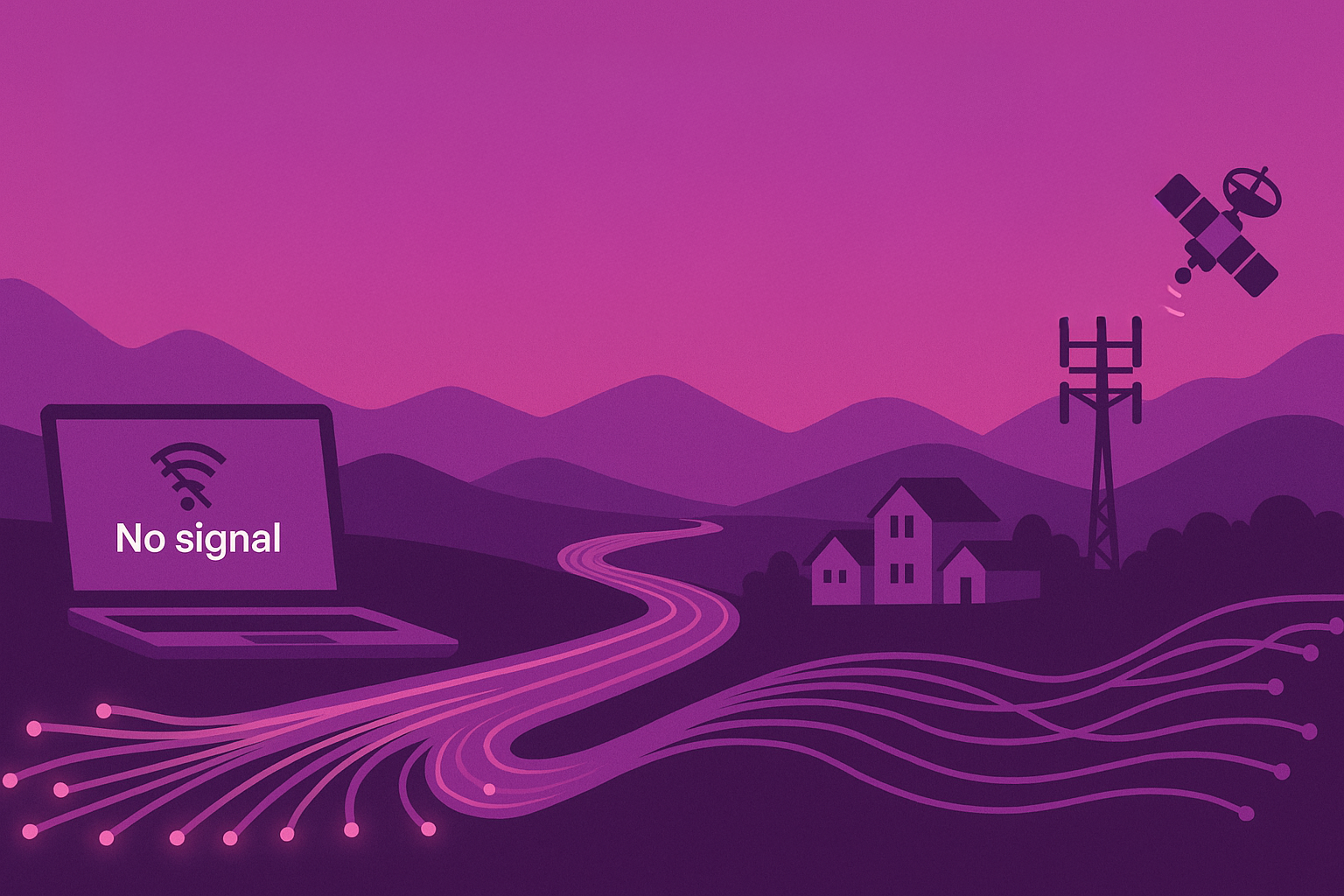The ongoing challenge of rural broadband
Cities are for business. The countryside? That’s for farming, ranching, vacations and outdoor pursuits. You might think that this was the overriding belief at the turn of the century, when most work was in office, when the internet was slow and infrastructure only just developing. Now in 2025, digital nomads can work anywhere in the world – connected to company systems and carrying on with work as normal.
The only problem is that the Instagram reel that shows a digital nomad sipping cocktails on a beach while parked in front of their laptop was filmed at a resort hotel, with broadband. Head into the mountains or forests of a rural area and it’s a different story. Even in 2025, many rural areas do not have reliable broadband. That digital nomad dream only works where there’s good enough connectivity and there are many rural areas in the USA that simply don’t have the coverage.
Forgotten or ignored?
With tech so ingrained into modern life, not having connectivity seems crazy. So why hasn’t broadband made it out to rural areas? The primary answer is that building broadband across mountains and remote areas is simply too expensive. Pure economics, they say. Too many obstacles, too few people. But that shouldn’t be the end of the conversation.
In the past decade there have been many promises to expand broadband in rural areas. There’s been some progress but not nearly enough. It’s still being held up by red tape and in many cases a lack of investment. At one stage subsidies were rolled out, many of these have ended. Is it time to consider other alternatives? After all, technology in broadband has made some significant advances. Especially in other parts of the world where there are even greater obstacles to installing infrastructure.
Lessons from Africa
Many people would consider rural Africa as being totally disconnected from the modern world. It’s certainly poor, people cannot afford luxuries such as computers or tablets, but they do like to stay connected. More than two decades ago broadband companies realized that into order to expand geographically into Africa, they needed to explore alternate types of infrastructure.
The solution? Satellites. Low-earth orbit and medium-earth orbit satellites can deliver signal to most areas, even mountainous terrain. The trick to making it work in way that makes it affordable to users is through shared infrastructure. It’s not easy, but with industry collaboration, it’s possible.
The question is whether a similar approach could work in the USA. Currently one of the obstacles for rural broadband is that while the big industry players say it isn’t worth it and regulations prevent smaller players from entering the market.
There are some trying to get regulations changed, but of course this takes time. It could be an entirely different scenario if the big players were to see the opportunity in shared infrastructure and open the door for smaller local players to enter the market. Is that a pipe dream, or is there a way to make it a reality?




